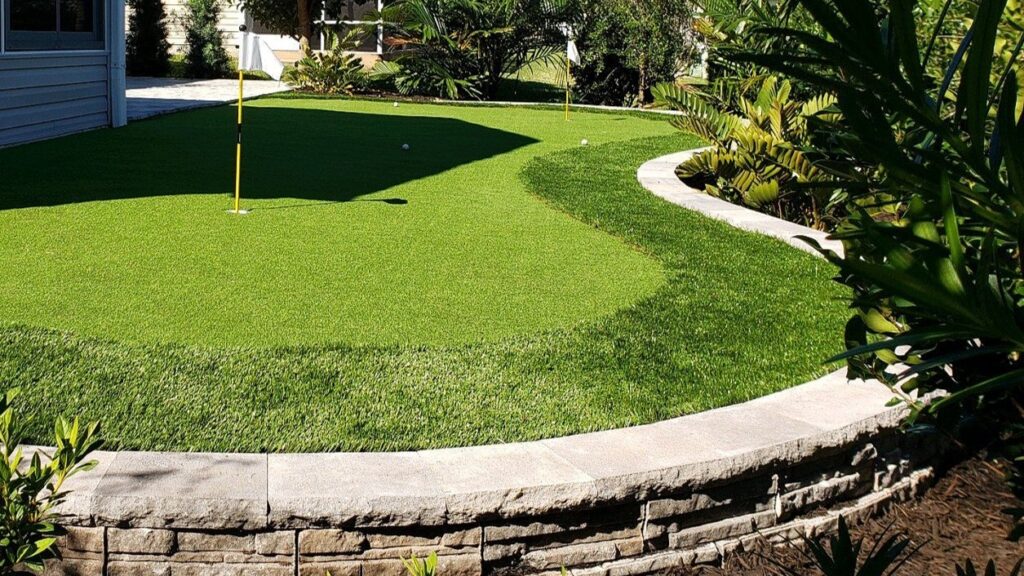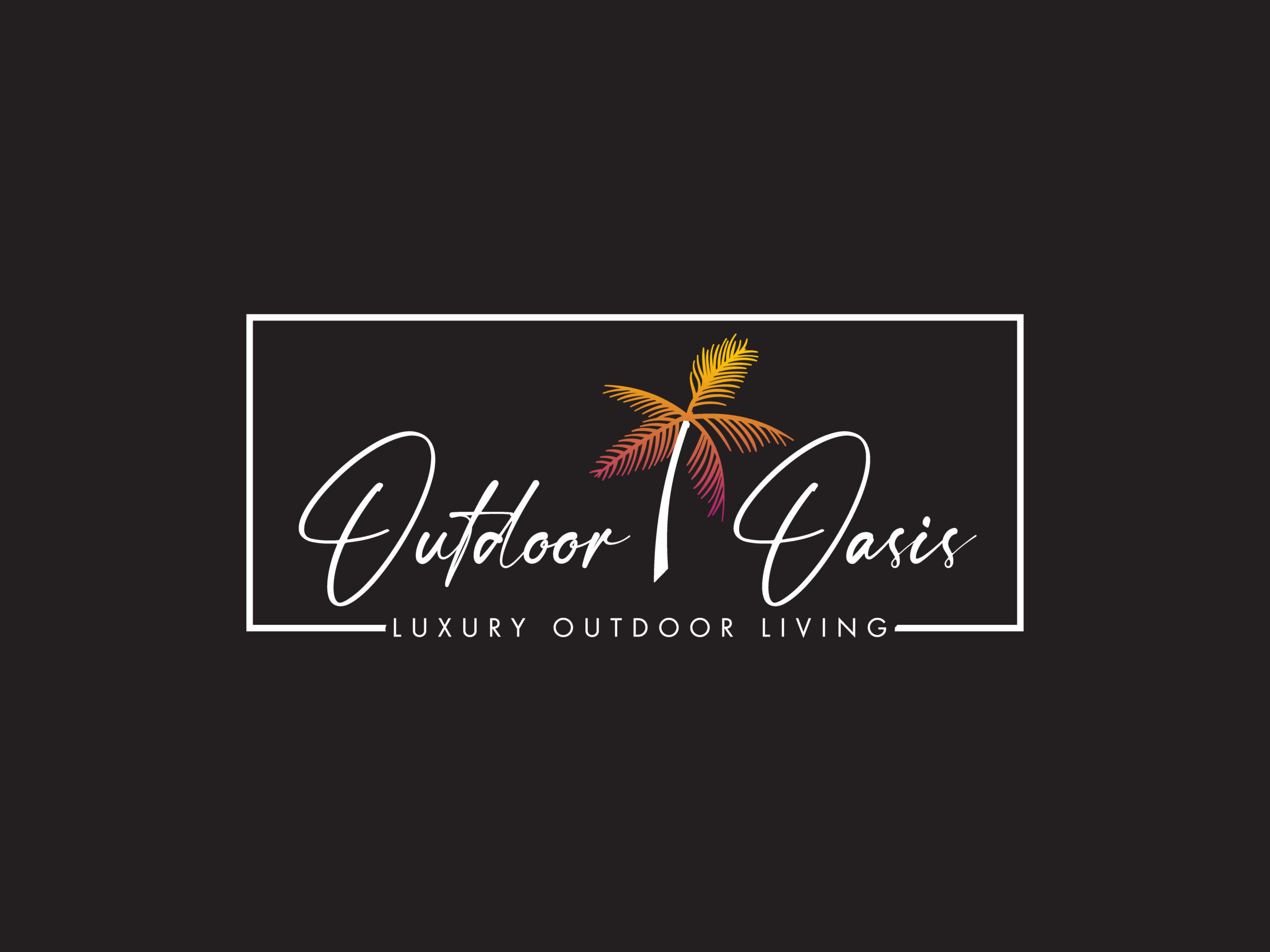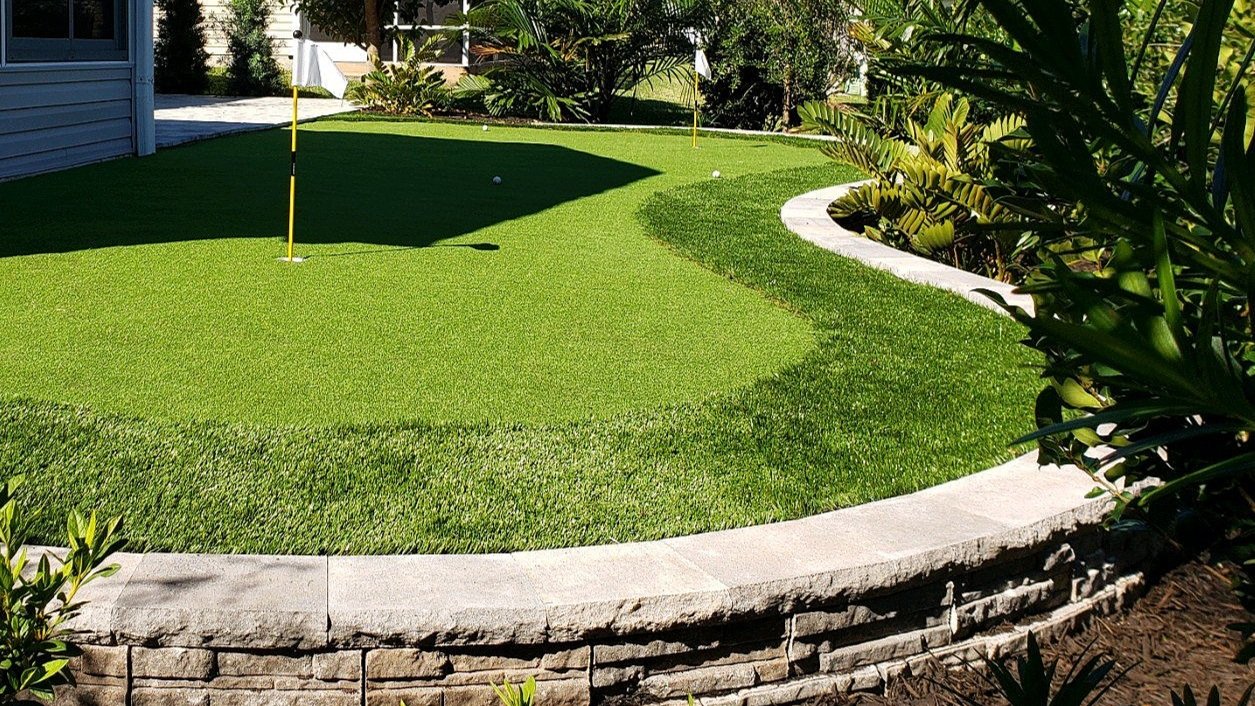Benefits of Turf & Turf FAQ's

When it comes to enhancing your outdoor living space, choosing the right type of turf can make all the difference. Not only does quality turf elevate the aesthetics of your backyard, but it also provides a functional area for relaxation and recreation. Among the best types of turf available, synthetic grass stands out for its durability and low maintenance requirements.
Here are some other benefits to turf you might not have thought of:
- No Need for Fertilizers: This reduces the environmental impact of harsh fertilizers and also saves you the cost and effort of regular fertilization.
- Safe for Children and Pets: Many artificial turf brands contain an anti-bacterial agent that helps prevent the spread of bacteria and germs. So your kids and pets don’t have to worry about being exposed to harmful pesticides when they play on the turf.
- No Grass Stains: Grass and mud stains come along with natural grass but not artificial turf, making it an excellent choice to families with active children who like to play in the backyard.
Turf FAQ’s
- What grass is best for an artificial putting turf?
You’ll want to have a short height, be between 0.5625 – 1.1125 inches tall, and be made of either nylon or polypropylene. Most putting greens have a fringe surrounding them that’s slightly taller and slightly darker so that it looks both realistic and aesthetically pleasing. - How high do you want your grass to be?
Artificial turf’s pile height ranges from 1.125 inches to 2.5 inches. Taller pile height is usually just for aesthetic purposes while the grass with shorter pile height is best for areas with heavy foot traffic. - Which grass is pet friendly?
What makes turf pet friendly is the material on the back of it is permeable with holes in it for drainage. This type of backing allows for drainage, otherwise the turf will start to smell bad. - How much do you want the grass to weigh?
Weight will affect how resilient to traffic the turf is. It is measured from 50 ounces to 110 ounces per square yard. The denser it is, the more resilient it is. - What do I need to know about turf installation? Plant life and existing grass need to be cleared so they don’t grow through the turf. The area needs to be excavated to allow for at least four inches of base material. It will then be built up and leveled so the turf can be installed. A weed barrier underneath the turf also helps ensure the turf will stay artificial.

